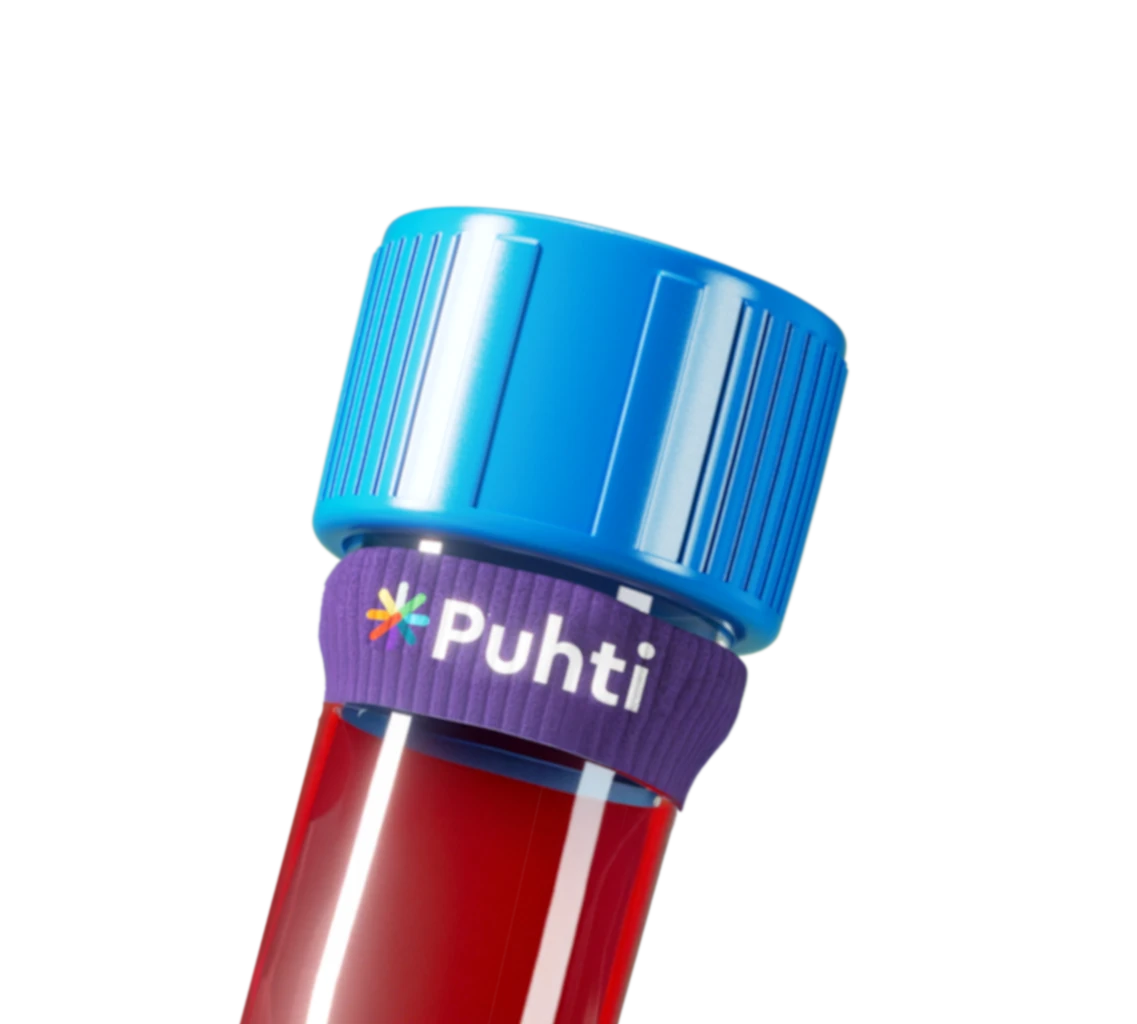
Folate (vitamin B9) – Sources, recommended intake, reference values, and symptoms of deficiency
Lack of folate can cause, among other things, nervous system symptoms, growth retardation and megaloblastic anemia.

Folate (vitamin B9) – Sources, recommended intake, reference values, and symptoms of deficiency
Lack of folate can cause, among other things, nervous system symptoms, growth retardation and megaloblastic anemia.
Folate
- Anemia can be caused by a lack of folate.
- On average, Finns get too little folate from food.
- Folate has a significant impact on the fetus’s well-being.
- Folate can be obtained from fresh vegetables, fruits and berries, beans, whole grain cereals, and liver.
What is folate (vitamin B9)?
Folate is a group B water-soluble vitamin (vitamin B9), which plays an important role in the transport of carbon atoms in the body. On average, Finns get too little folate from food. Folate is an important vitamin that may, for example, reduce the risk of Alzheimer’s disease and bowel cancer and promotes brain health.
Folate, or vitamin B9, is especially important for women planning pregnancy and pregnant women, as low intake of folate in early pregnancy increases the risk of the developing fetus’s neural tube defect.
What is folic acid?
The synthetic form of folate is called folic acid.
What is the role of folate in the body?
Folate is essential for humans. It is needed, among other things, in red blood cell formation, brain metabolism, DNA function, and the production of hydrochloric acid in the stomach. The body’s folate storage is located in the liver.
Insufficient folate intake has been found to pose a risk of neural damage to the fetus and may also impact the onset of certain cancers. Studies also suggest that folic acid supplementation appears to promote arterial endothelial function, which reduces the risk of atherosclerosis and stroke.
Our bodies are unable to form folate on their own and, therefore, we need to get it from food.
When and why should the amount of folate be tested?
A folate test (fS-Folaat) can be used to study folate deficiency.
High-risk folate deficiency groups include:
- women
- those who eat unvaried diets with little vegetables
- pregnant and breastfeeding women
- those suffering from malabsorption syndromes (e.g. coeliac disease)
Folate is also examined if there is a suspicion of anemia.
What are the folate intake recommendations?
The recommended intake of folate is 300 µg/day for men and postmenopausal women and 400 µg/day for women of reproductive age. The recommended intake for pregnant and breastfeeding women is 500 µg/day.
On average, Finns get too little folate from food. Women in particular receive little folate compared to the recommendations.
Folic acid supplementation is recommended for all women who are pregnant or plan to become pregnant.
What are the sources of folate?
Good sources of folate include fresh vegetables, fruits and berries, beans, whole grains, and liver. Folate is rapidly degradable and heat-sensitive, so it is broken down when food is cooked for a long time. Folate sources should therefore be consumed raw where possible.
Insufficient intake of vitamin B12 reduces the absorption of folate.
Folate sources
The following foods are good sources of folate:
- liver dishes
- adzuki beans, kidney beans, black beans, white beans, brown beans, soybeans and soybean flour and meal
- kidney dishes
- nettle, spinach, kale and other dark green leafy vegetables
- asparagus
- chickpeas
- parsley
- beetroot
What are the reference values for folate?
The fS-Folaat reference values are 8.8–61 nmol/l.
The fE-Folaat reference values are 1,187–2,854 nmol/l.
The reference values vary from laboratory to laboratory and according to the analysis method. Puhti samples are taken and analysed at the laboratories of Mehiläinen.
Low folate value
Insufficient intake of folate reduces cell division functions. Therefore, the deficiency is first manifested in rapidly dividing cells, such as mucous membranes, the digestive tract and red blood cells.
What causes a low folate value?
Low folate levels can occur, for example, during pregnancy, among breastfeeding women, in the case of malabsorption syndromes, rheumatism, tuberculosis, malign tumours and leukaemia, or after a gastrointestinal resection. Low folate levels may be due to the following reasons:
- insufficient intake of folate from diet, malnutrition
- increased need (e.g. pregnancy, breastfeeding, tuberculosis, malign tumours, leukaemia)
- malabsorption (e.g. coeliac disease, Crohn’s disease, small bowel resection)
- altered intestinal microflora as a result of antibacterial therapy or chemotherapy
- use of certain drugs (e.g. phenytoin, primidone, metformin, sulfasalazine, triamterene)
- excessive use of alcohol
What are the symptoms of folate deficiency?
Folate deficiency can lead to complex health problems. Folate deficiency symptoms include:
- megaloblastic anemia
- decreased absorption of nutrients due to damaged digestive tract cells
- impaired immune system
- skin lesions
- muscle weakness
- growth retardation
- nervous system symptoms
- oral mucosa lesions
- depressive symptoms and melancholy
- mouth and tongue ulcers
- macrocytic anemia
- shortness of breath
- limb weakness and sensory disturbances (peripheral neuropathy)
- tiredness
- memory impairment
- headache
- irritation
- behavioural disorders
- confusion
Effect of folate on the fetus
Folate has a significant impact on the fetus’s well-being. Folate deficiency can cause disruption of the closure of the neural tube of a developing fetus. At worst, this can lead to severe deformities.
Folate is needed from the very beginning of pregnancy, which is why the use of folic acid supplements is recommended already when planning a pregnancy.
High folate value
A high folate value may be associated with, for example, a high intake of vegetables (foods rich in folate) or the use of supplements.
The body stores folate for about 3–4 months.




